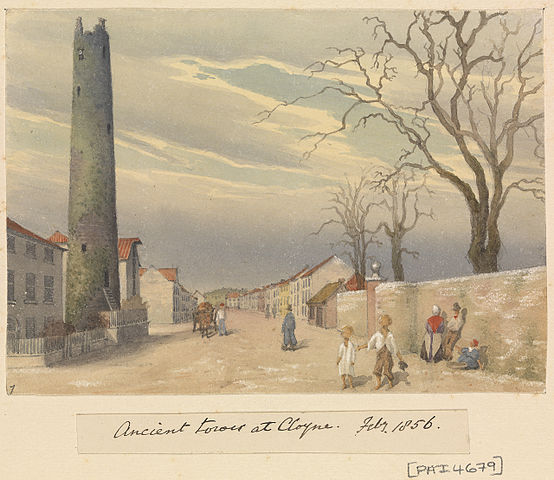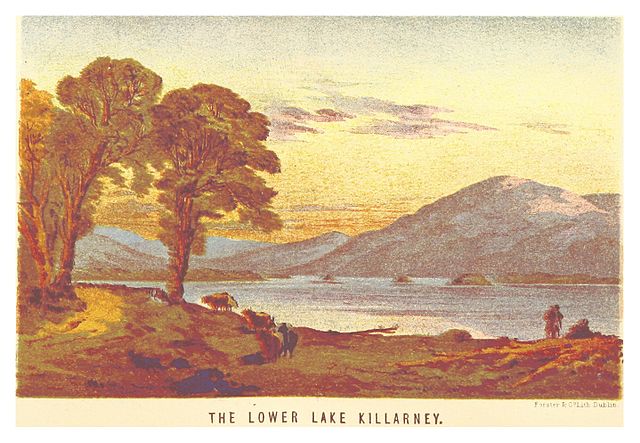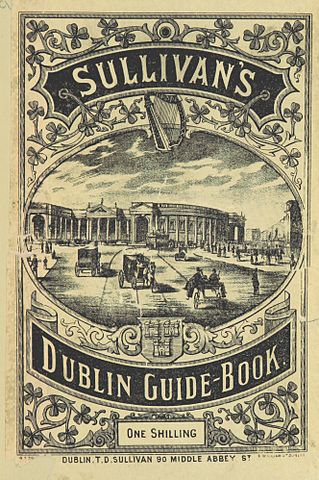
W.B. Yeats had much to say during his time. This long winded article found in a 1903 newspaper discusses Yeats vision for Ireland and particularly for Dublin. Always a patriot, his visions for the future of Dublin and his love for his people were boundless.

The Future of Irish Art
Great Painter Enthusiastic Over Its Prospects
Dublin to Be the Center of a World Colony of Painters
W.B. Yeats, portrait painter and Irish patriot, looks forward to the day when Dublin will be the home of a celebrated colony of artists.
“This light was made for painters,” he declared. “We escape the gloom of London here and we are in the midst of people among whom artists like to live. Our whole environment, animate and inanimate, quickens the artistic instinct.”
Mr. Yeats asserts that the Irish people are poetic and sympathetic and have a large capacity for the ideal. “They love the things of the mind,” he said. “Go into our schools and witness the splendid energy there. See our boys study. They are looking forward to great careers. One Irish boy says, ‘I’ll go to London and become a judge,’ another, ‘I’ll be a big doctor,’ another, ‘I’ll go to India and make a name,’ or ‘I’ll be off to Persia and become a grand vizier,’ another, ‘I’ll write a volume of essays or poems or compose a song or pain a picture.’ The English boy says, ‘I’ll go into my uncle’s office,’ or ‘I’ll go into trade and make a fortune.’ Hence the English boy’s dull plodding and perfunctory devotion to study. The career held out to the English boy makes him a drudge and crushes the poetry in himself; the career held out to the Irish boy makes him work light heartedly and stimulates his powers of mind and soul.”
Great things seem to Mr. Yeats to be in store for Ireland when the Catholic element in the country attains efficiency in practical things. “It will be a glorious country then,” he affirmed. “The Catholics are full of longings and poetic musings, but they are slack, inefficient. The Protestants are without imagination. save the imagination of oratory, but they are great administrators, they are highly efficient. Catholic Ireland is awakening. We must keep commerce out founded on the very beautiful work in the the arts-crafts — silver work, furniture, stucco, glass and mezzo-tint engraving — done in Ireland up to just before the union. Among the fine work being done by Irish artists today are the landscapes of Nathaniel Hone and the sculpture of John Hughes, a young man of great genius and energy. Walter Osborne is among and keep the English out. The latter are mean because they worship material things. Everybody in England wants a fortune, and money makes the poor slaves and the rich beasts. The dry rot of physical degeneracy has set in beyond the channel, and in the great industrial centers the people cannot stand straight.

“Elizabethan England enjoyed itself. It spent much time at the theater and was well off. I think the doctrine of hard work is an infernal doctrine. It should give place to the doctrine of amusement. Hard work I condemn, good work I commend. Good work is but a form of amusement, and intellectual pursuits are the best forms of amusement. In Ireland we are poor, but we are mentally and spiritually healthy. We are not soured. We are not petulant. We do not rush through the streets like madmen. We have not lost our capacity for enjoyment. Despite our poverty and ignorance, the springs of our natures are sweet.”
In the foregoing Mr. Yeats indicates his reasons for putting a high value upon the qualities of the Irish people as companions for men and women of artistic gifts. He also thinks inanimate Dublin a pleasing home for the artistic temperament. He likes the architecture, the statues, the parks and such stately thoroughfares as Sackville and the Nelson pillar. The Bank of Ireland, Trinity College and St. Patrick’s Cathedral are thought to offer fine specimens of the type of structure that gives to the Irish capital the aspects that please the artistic eye and nourish artistic talent.
The best hopes for Irish art are the leading portrait painters and a most accomplished artist. W. Orpen, though little more than a boy, has made a name in London with his intensely moralized Hogarthian painting and drawing.

The suburbs of Dublin have wonderfully improved within the past twenty years, and with their many fine buildings and remarkably well kept streets, they may almost be said to constitute at present the chief of the many attractions which the stranger is wont to admire. The outlying townships of Rathmines and Rathgar, Kingstown and Pembroke, Clontarf and Dalkey, are all inhabited by persons engaged in the commerce of the city.
In wealth and commercial importance the capital of Ireland is increasing yearly, and architecturally its beauty is being steadily added to. The venerable buildings of famous old Trinity College, rich with the memories of famous Irishmen who have graduated from its halls to win distinction in all walks of life, are particularly attractive to the visitor and are pointed to with pride by every native of the city. The population may safely be put at 400,000 and it steadily advancing, the emigration from the island not seeming to affect the residents of the capital. No spot in Europe is more worthy the attention of the tourist that the chief city of the Emerald Isle. [Source]

